The New York World's Fair 1939-40
Click on the Medals tab to see some of the medals issued for this exposition.
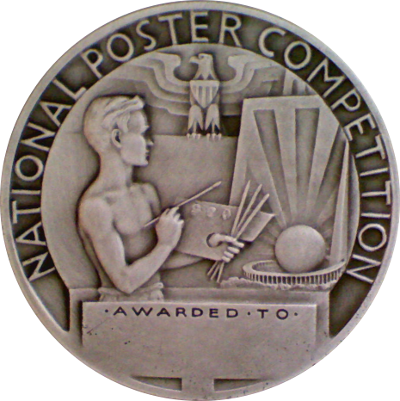
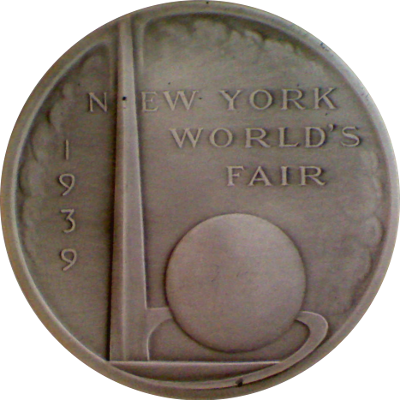
The medal's obverse bears boy painting poster with World's Fair motif in front of eagle. Around, NATIONAL POSTER COMPETITION.
The medal's reverse bears the New York World's Fair motif of trylon and perisphere. To left of trylon, 1939; across, N - EW YORK / WORLD'S / FAIR.
The National Poster Competition was officially announced on March 30, 1937 and was open to students throughout the United States. Participants could submit original poster designs for the New York World's Fair of 1939/40.
The medal was struck in bronze and silver, with the silver pieces being much rarer than those struck in bronze.
This medal measures 51mm (2in) in diameter and was struck by the Whitehead & Hoag Company of Newark, New Jersey.
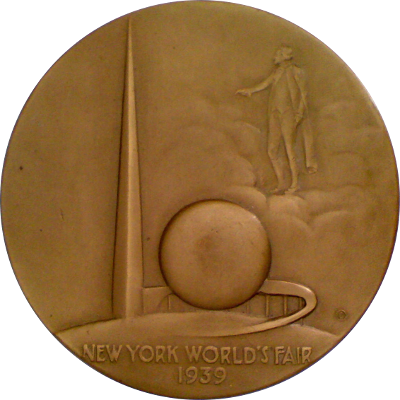
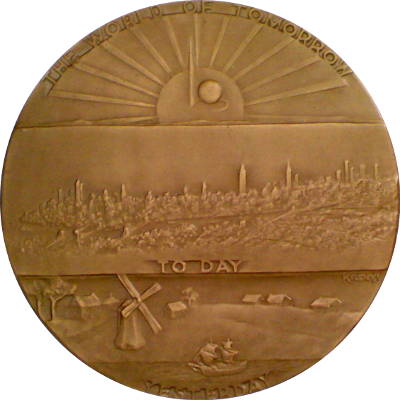
The obverse bears view of iconic Trylon and Perisphere; at upper right, a full length figure of George Washington emerges from cloud banks. At bottom, NEW YORK WORLD'S FAIR / 1939; at right, ©
The reverse bears three panels; top panel shows Trylon and Perisphere over radiant sun; above, THE WORLD OF TOMORROW; the middle panel shows view of Manhattan skyline as seen from the World's Fair grounds with legend TODAY; bottom panel shows view of New Amsterdam with legend YESTERDAY; signed at top right corner of bottom panel, KILENYI
The edge bears the marks ROBBINS CO. / ATTLEBORO - BRONZE.
This was the official medal of the New York World's Fair of 1939-40. The 190m-tall spire-shaped Trylon contained the (at the time) longest escalator and the 54m-diameter Perisphere housed a diorama called "Democracity" which depicted an topian city-of-the-future. A moving sidewalk transported spectators past the exhibits.
A much rarer version of the medal exists in which the year is 1940 rather than 1939.
The medal measures 63.5mm in diameter and was struck by the Robbins Company of Attleboro, Massachusetts.
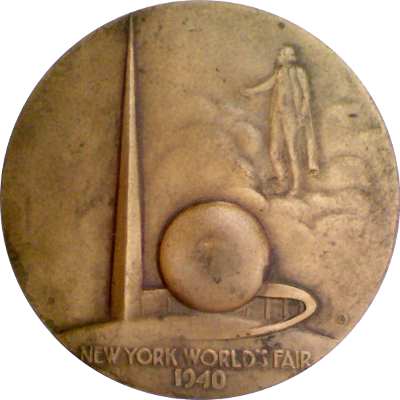
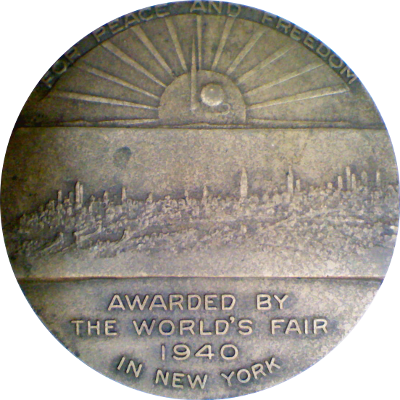
The obverse bears view of iconic Trylon and Perisphere; at upper right, a full length figure of George Washington emerges from cloud banks. At bottom, NEW YORK WORLD'S FAIR / 1940; at right, ©
The reverse bears three panels; top panel shows Trylon and Perisphere over radiant sun; above, THE WORLD OF TOMORROW; the middle panel shows view of Manhattan skyline as seen from the World's Fair grounds with legend TODAY; bottom panel shows view of New Amsterdam with legend YESTERDAY; signed at top right corner of bottom panel, KILENYI
The edge bears the marks ROBBINS CO. / ATTLEBORO - BRONZE.
This was the official medal of the New York World's Fair of 1939-40. The 190m-tall spire-shaped Trylon contained the (at the time) longest escalator and the 54m-diameter Perisphere housed a diorama called "Democracity" which depicted an topian city-of-the-future. A moving sidewalk transported spectators past the exhibits.
This is the much rarer version of the medal that shows the year as 1940 rather than 1939.
The medal measures 63.5mm in diameter and was struck by the Robbins Company of Attleboro, Massachusetts.
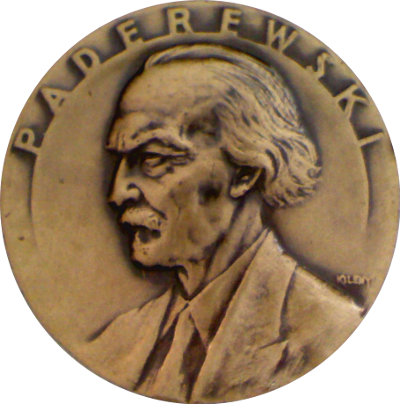
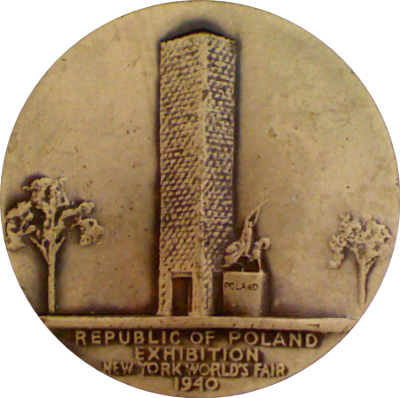
The obverse bears bust of Paderewski facing left. Above, PADEREWSKI; signed at bottom right, KILENYI.
The reverse depicts Poland Exhibit bilding at World's Fair surrounded by two trees. In exergue, REPUBLIC OF POLAND / EXHIBITION / NEW YORK WORLD'S FAIR / 1940
Ignace Jan Paderewski was one of the most famous pianists of his age and an inspiration to Polish nationals. In addition to being a world-renown pianist, he was also famous for his wit. One anecdote recounts how he was introduced to a polo player with the words:
"You are both leaders in your spheres though the spheres are very different."
He replied:
"Not so very different. You are a dear soul who plays polo, and I am a poor Pole who plays solo."
Kilenyi admired Paderewski and, when he was retained to design a medal symbolizing the friendship between the United States and Poland, he picked his likeness for the obverse. Because Paderewski was unable to sit for him and photos and drawings were not sufficient Kilenyi watched Moonlight Sonata, a movie featuring the famous pianist, to capture Paderewski's essence.
Click or tap the medals to see their reverse sides.
Contact me if you have links that might merit inclusion on this page.